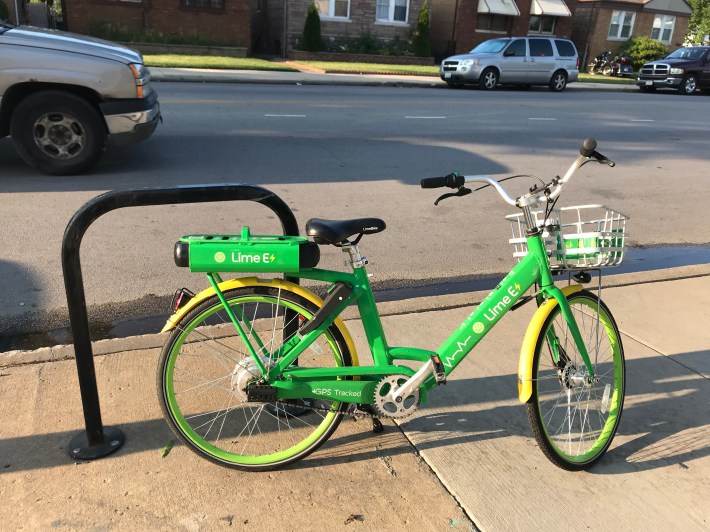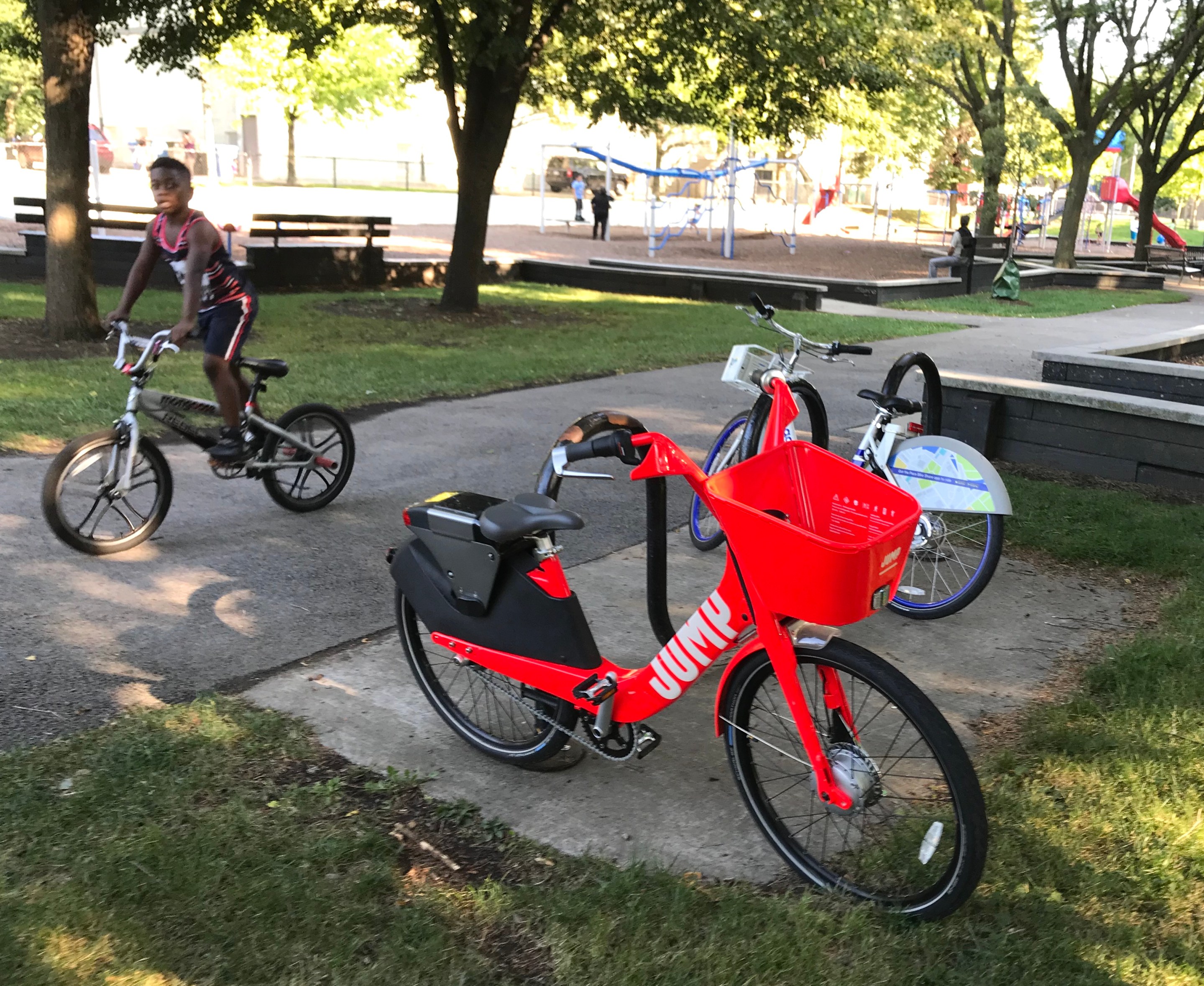Jump Mobility, the relative newcomer to Chicago's dockless bike-share experiment, led the pack of competitors in July with the most DoBi rides ever racked up in a month in Chicago, according to data obtained from the city via a Freedom of Information Act request.
The dockless pilot, which includes almost all of Chicago south of 79th Street, began in early May. The original three vendors included LimeBike, with green, "wheel-lock-only" electrical-assist bikes; Ofo, with yellow, wheel-lock, non-electric cycles; and Pace, with blue-and-white, "lock-to," non-electric bikes. Jump joined on July 2, deploying red, lock-to, electrical-assist bikes.
Ofo quit the program in July, citing frustration with Chicago's rules favoring lock-to bikes, which feature built-in U-locks or cables for securing them to a fixed object like a bike rack or pole. As a strategy to reduce sidewalk clutter, theft, and vandalism, the city currently is only allowing wheel-lock companies (i.e. LimeBike) to deploy 50 cycles, but lock-to companies (Pace and Jump) can have up to 350 cycles.
When I looked at the May and June ridership numbers last month, LimeBike had garnered the most use, despite the fact that it had only a fraction of the number of bikes as its rivals, and Lime's cycles were more expensive to use. They cost $1 to unlock plus 15 cents a minute to ride, versus $1 per half hour for Pace and Ofo. However, Lime's stronger ridership may have been due to the company being the only one to rent electric bikes, offering a speedy, sweat-free ride.

But that was no longer the case after Jump, which was recently purchased by Uber, joined the party in July with its electric bikes. Jump trips cost $2 for the first half hour, plus seven cents for each additional minute. So a $2 half-hour ride on a Jump is significantly cheaper than one on LimeBike, which would cost $1 to unlock plus $4.50 in usage fees.
That may be reflected in the new numbers. Lime's total trips have dropped each month, from 1,170 in May, to 1,137 in June, to 955 in July. Spokeswoman Becky Carroll confirmed that rides were down in July but had no additional info by publication time.
Pace's total trips have grown each month, from 343 in May, to 962 in June, to 1,063 in July. Spokeswoman Danielle Toboni confirmed that the numbers are accurate but had no further comment.
But Jump blew them both away last in July with 1,651 trips taken -- 73 percent more than LimeBike's 955. Again, the higher number seems to be due to it having a relatively high number of electric bikes, at a cheaper price than Lime for any ride any ride longer than six minutes. "We're proud to provide residents from every Chicago neighborhood with affordable, flexible transportation options -- including Jump bikes on the South Side -- and look forward to continuing to help move Chicago," said Uber/Jump's Charity Jackson.
Plotting the July trip data on a map provides an indication that July DoBi use was much better distributed around the pilot area than in previous months. A map of May and June Chicago dockless trips showed that most rides had been taken in or near the relatively affluent Beverly neighborhood, where LimeBike had been concentrating most of its bikes.

Maintenance and customer service reports that Lime and Pace provided to the city (my FOIA request didn't turn up any from Jump) suggest that problems with bikes blocking sidewalks or being trashed by vandals continue to be relatively rare in Chicago. That may be partly thanks to the fact that most of the bikes are lock-to cycles, which are secured to racks and poles.




